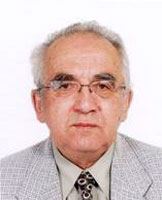The fifth part of the article "Lightning protection of aircrafts"
Have you ever stroke a cat in a dark room? On a frosty winter evening, you will see weak blue sparks under your hand. It is a frictional electrification. An airplane is not a cat, but at a high speed, it gets electrified as well. It happens because of mechanic microinclusions and hydrometeors in the air, able to split the charges at the friction against the fuselage surface. Slightly charged flow of gas from the airplane turbines contribute its share of electrization. At the charge capacity of about 10-9 F, the charge on the airplane becomes 200-300 mcCl, rising potential up to 300-300 kV. It doesn't mean much for lightning initiation. In comparison to the potential of a thunder cloud of about 108 V, the addition is not very weighty, though it can bring to very effective consequences. When the airplane chassis approach the runway, there happens an electric charge on the ground about one m long, usually along the entire surface of the wheels. It can be well seen in the darkness.
But the danger of elecrization is in a different thing. The voltage of hundreds of kilovolts is enough to excite the gas-discharge process from the exterior constructions of a small radius of curve, first of all from external antennas. The charge is being formed in a streamer form. The length of the streamer branch at the voltage of 200-300 kV achieves 40-60 cm. Its formation is accompanied by the pulse current of the amper level with a nano-second front. It becomes the source of high-frequency electromagnetic disturbances for the on-board equipment. Any modern aircraft is equipped with electrostatic arresters for the discharge of electrization charges. They are usually placed on the rare wind edges and tail (fig. 8).

fig. 8. Electrostatic arresters
The body of the arrester 10-15 cm long presents itself a flexible resistor with the resistance of 10-100 mOhm. Thanks to it, the ionization on the ends of the bundle of thin wires can exist only in the form of the so-called ultracorona. Its current of microamper level is absolutely devoid of pulse component, and that is why doesn't create electromagnetic disturbances.
E. M. Bazelyan, DEA, professor
Energy Institute named after G.M. Krzyzanowski, Moscow
Read next "6. Electromagnetic disturbances from lightning current"
See also:
- Useful materials for grounding and lightning protection designers
- Free webinars with the leading industry experts
- Real-life examples of grounding and lightning protection calculations
Related Articles:
 Lightning protection of residential and public buildings - answers to frequently asked questions in the design
Lightning protection of residential and public buildings - answers to frequently asked questions in the design


 Lightning Protection of Large Territories: Parks, Grounds, Plant Territories. Page 1
Lightning Protection of Large Territories: Parks, Grounds, Plant Territories. Page 1
 Lightning Protection of Large Territories: Parks, Grounds, Plant Territories. Page 2
Lightning Protection of Large Territories: Parks, Grounds, Plant Territories. Page 2
 Lightning Protection of Large Territories: Parks, Grounds, Plant Territories. Page 3
Lightning Protection of Large Territories: Parks, Grounds, Plant Territories. Page 3

